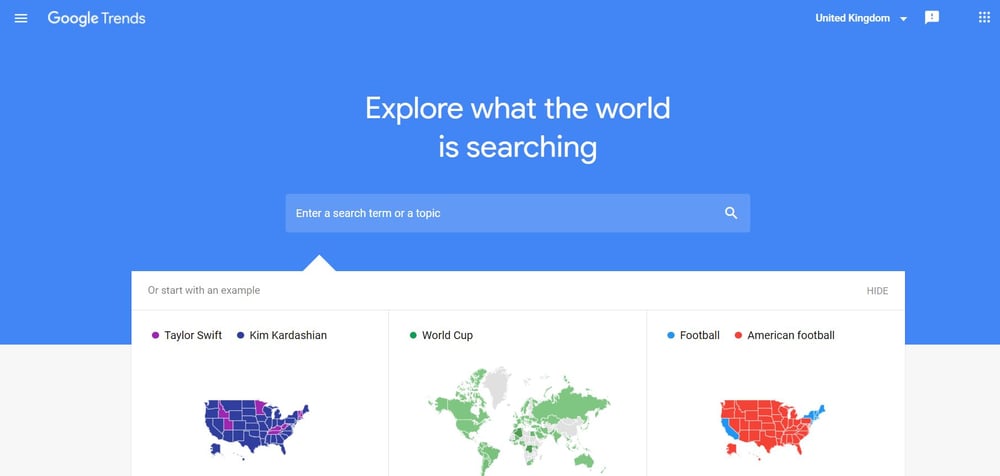One of the main challenges facing marketing managers is often how to get the most out of your social campaigns.
With over 3 billion of the worlds population on social media it's no wonder that there's a lot of noise to cut through when it comes to marketing to a target audience and more importantly generating quality leads.
Thankfully, there are certain ways in which you can help improve your conversion rates on social media, and we are going to go through 8 of the most effective for your campaigns.
1. Optimise your landing pages for mobile
Mobile - E-commerce has taken off and if you operate in social media marketing then giving the consumer the opportunity to purchase on the go is a must, so making sure their purchasing journey is suitable to their device is essential. In 2021, 64% of SEO marketers called mobile optimisation an effective investment, so how do you ensure your business doesn't get left behind?
- Reviewing the user experience through previewing social posts and landing pages on different devices to gain insight from the user's perspective.
- Google offers a free 'Mobile-Friendly' Test which will give you a quick indication if your page is mobile friendly. While this is good for a quick insight, we would recommend using a tool such as Google Search Console for more in-depth information.
- Check your site speed. 47% of consumers expect a web page to load in two seconds or less. There are various tools you can use to check your site speed time, take the time to figure out your site speed and if it's lower that you would like there are way's you can easily improve the loading time i.e. optimising any images you have on-site.
2. Learn from your data
One of the easiest ways you can improve your conversion rates is to look at the data that is already available to you.
Using reporting tools is your first port of call when you want to see how you can improve your marketing campaigns, and this is no different with Social.
Tools like Google Analytics or HubSpot are a simple way to gauge performance where you can even split out activity by channel and such analysis helps you tie the results with your campaign objectives and understand if you are on the right track or not.
Track click-through-rates, bounce rates and various metrics to gain insight into how users interact with your social media content and what actions take place after they have seen your content.
3. Know your audience
Following on from the above, there's no point targeting an audience and measuring their responsiveness if you've not targeted them correctly.
For example, if you target a younger audience with a B2C offering then it's probably not a great idea to focus heavily on the likes of LinkedIn, whilst TikTok or Instagram for visual content would be more pertinent.
With that in mind, understanding your audience and targeting them with the right content will go a long way to improving your conversion rates. Suggested content like below is a great starting point:
Facebook: Videos and curated content
Twitter: Industry News, blogs, and gifs
Instagram: Short digestible content, Behind the scenes, insight into company culture
LinkedIn: Professional content, jobs, and company news, case studies and Industry insights
Pinterest: Pictures and infographics
TikTok: How-to guides, short demos
Create in-depth buyer personas to learn more about your audience, their likes and dislikes, what social media platforms they are more likely to be actively on, and ultimately you'll have a better understanding of messaging for this audience.
4. Monitor trends
As a marketing manager, you need to be constantly up-to-date with what's going on in your targeted industry. Hashtags via Twitters discovery tabs and LinkedIn recommendations shouldn't be ignored as you should be keeping up with a fast changing world and also a fast changing marketplace regardless if you're B2C or B2B.
Use tools that are available such as Google Trends to stay up to take with what's trending in your industry. Simply search a topic to find out it's search volume, or you can gain insight into trending search to find out what topics are trending for your location.

From what customers are saying about you to trending topics worth mentioning in your sales-related posts, these insights can directly influence your social sales strategy.
5. User Generated Content works
UGC (User Generated Content) is a great way for increasing your conversion rates and build trust/brand reputation.
Sharing user reviews, pictures, status and videos representing your product is not only an authentic seal of approval, but it also works as promoting your product for zero cost.
Therefore, making sure your social campaigns are worthy of promoting is a vital step to boosting your conversion rates.
Ensuring your messaging comes with a prompt to tag your account is a good way to ensure UGC can help.
6. Consistent messaging
It goes without saying that your brand should be evenly represented throughout your social strategy. A 2021 consumer survey found that one of the most frustrating things for consumers online was inconsistent brand messaging.
This isn't to say content should not be shaped based on the channel, however it should be obvious what your brand is about regardless of social channel.
As prospects and leads move through your funnel, there shouldn’t be any second-guessing where they’re coming from.
Elements such as your creative, tone, colour scheme and text should be fitting of what you're trying to represent on that specific channel - doing so effectively goes a long way to increasing conversion rates.

7. A/B test your content
While it's important to do your research and build buyer personas to understand your audience, this is only a foundation for meeting your target audience needs.
While there are some quick fixes for improving your optimisation rate, ultimately to see bigger increases you will have to commit, analyse your data and then optimize. One method of doing this is by carrying out A/B testing or spilt testing.
A/B testing (also known as spilt testing) is the act of creating two different formats of content, for example Facebook Ads promoting a new clothing range, and then the ads are shown to two random groups. You'll then analyse the results to see what variation is better received, which ultimately will give you an indication into your audience's preferences. Examples of elements of content you could test on social media could include:
- Post length i.e. do your audience prefer short posts or posts in greater detail
- Tone of voice i.e. casual, formal or passive
- Static images, carousel or video
Over time, you will gain insights about what works best for you on each social network, helping to refine your social media strategy.
8. Compelling CTA's
It's all well and good having flashy social posts which generate views and interactions, however if you don't have a polished CTA to match, then these leads simply won't convert.
A CTA for a social campaign needs to be reflective of not only your messaging but your brand and be in line with your landing page also. Getting this right is imperative to improving conversion rates.
Experiment with your CTA's and make them eye-catching for your audience. Make it clear what action you would like your audience to take, and make it as easy as possible for them to get there. For example make use of app features such as Instagram's Link in Bio or sticker link which was made available to all content creators at the end of 2021.
This is what determines whether people will click that button, give up their email address, and share your brand with friends and family.
In conclusion, value is everything
While taking into consideration all the above strategies to improve your social campaigns, it's important to note that value is everything.
What we mean by this is that whichever medium you use, product or brand you are pushing and budget you have at your disposal, it is fully up to you to ensure value is derived from the campaign and is the overall driver for increasing conversion rates.
So, with this in mind, you need to know that you're putting in the right amount of effort and commitment to yield the results that will not only improve conversion rates but will reflect true value for social campaigns.
